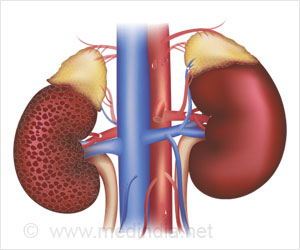Professional soccer players who participated in a special preseason groin injury prevention program had fewer groin injuries during that subsequent season.
According to new research released today at the 2007 Annual Meeting of the American Orthopaedic Society for Sports Medicine at the Telus Convention Center,Professional soccer players who participated in a special preseason groin injury prevention program had fewer groin injuries during that subsequent season than those who were not in the program.
The researchers enrolled 315 major league soccer players in a preseason groin injury prevention program to evaluate the effectiveness of the program.The 20-minute program was used as a prepractice warm-up two to three times a week during the preseason period. It included three phases – warm-up, dynamic stretching, and strengthening.
The participating athletes had a groin injury incidence of 0.44 injuries per 1,000 hours, while a control group had a groin injury rate of 0.61 injuries per 1,000 hours.
“Our 28% injury reduction rate is highly significant,” says principal investigator Michael B. Gerhardt, M.D., director of the Center for Athletic Hip and Groin Disorders in Santa Monica, Calif., and team physician for US Soccer and Chivas USA, a major league soccer team. “We were anticipating a 5-10% reduction rate, so we were pleasantly surprised that the injury reduction number was so high.”
Most professional soccer teams in Europe and the United States recognize groin injury as a major problem, according to Dr. Gerhardt. Groin injury accounts for a large amount of lost playing time.
They are common in elite soccer players and especially problematic among male soccer players. The term “groin injury” encompasses a wide range of injuries ranging from minor groin strains to chronic groin injuries, such as sports hernias, which often require surgery.
Advertisements
“While we were able to prevent the total number of groin injuries, we were unable to significantly reduce the number of surgeries,” comments Dr. Gerhardt. “Once an injury reaches the chronic stage it is hard to manage with any treatment regimen, including ours. These players typically go on to require surgery.”
Advertisements
“If a simple 15- to 20-minute program can reduce the number of groin injuries that are occurring in professional athletes, I think it will gain widespread use,” notes Dr. Gerhardt. “We’ve seen this with ACL prevention programs, which have been implemented successfully by a variety of teams around the world.
I anticipate that professional soccer teams will want their players to participate in a program if it is simple, cost effective, and, most importantly, proven to reduce groin injury.”
Dr. Gerhardt attributes the success of the prevention program to the multidisciplinary efforts of several expert therapists, trainers, and physicians.
Source-Eurekalert
JAY/M







